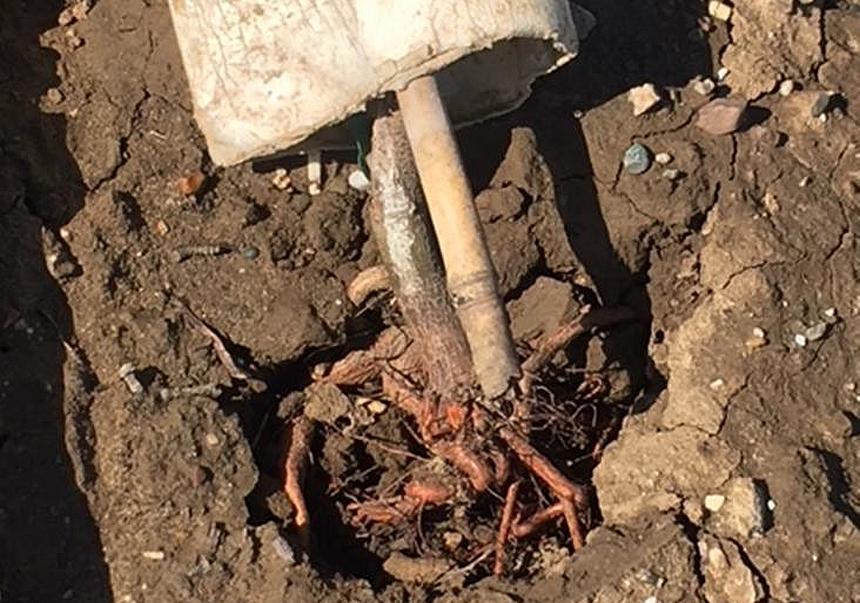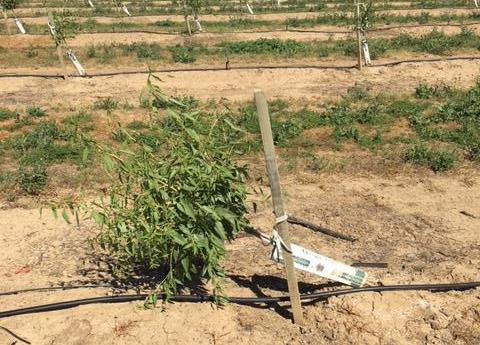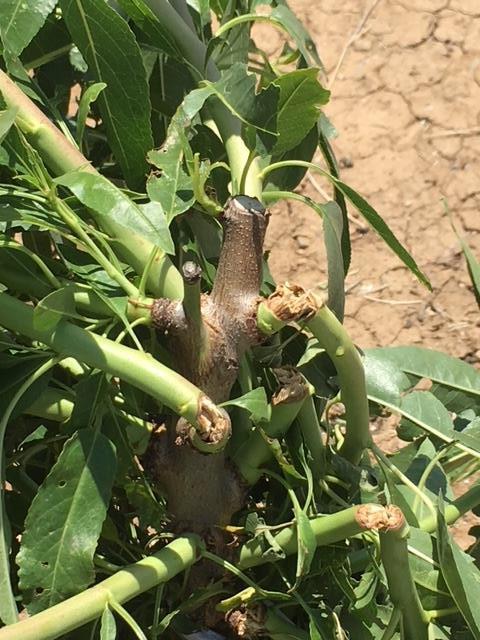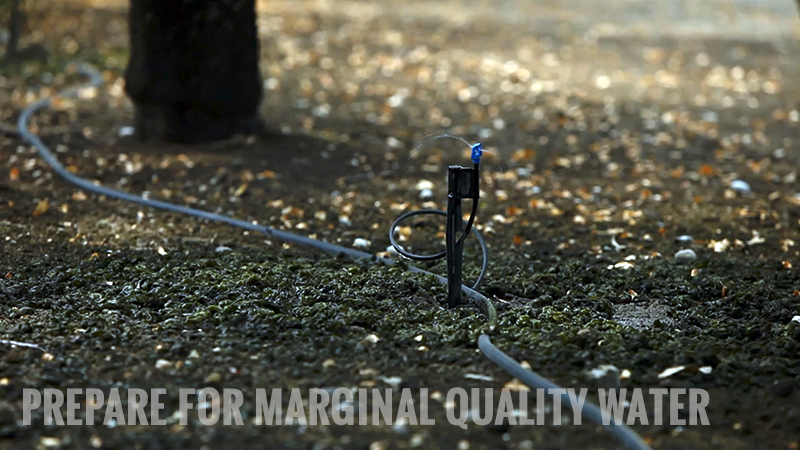Wind Raises Havoc on Newly Planted Almond Trees

A tree with a broken root base due to damaging winds. (Photo: Wes Asai)
Strong winds late spring of this year caused extensive damage to many newly planted almond orchards. While wind is always a concern, the time that it occurs can produce significantly different results. This past spring, temperatures were mild and shoot growing conditions were excellent. As a result, newly planted almond trees developed large canopies early in the growing season.

Trees leaning over as a result of damaging winds in late May. (Photo: Wes Asai)
When strong winds hit in late May, several types of breakage occurred. Trees with a large canopy and a small root system were either laid on their sides or snapped at the junction of the base of their trunks and roots.
These problems were exacerbated with potted trees, where it is common for the developing roots to stay confined in a small mass early, or in the case of some of the hybrids, form relatively shallow horizontal roots. Some of these trees can be up-righted and saved, but in other cases, the junction right at the root base is broken and will not support the weight of the top.
The up-righted trees often will require two to three stakes to prevent them from flopping in the opposite direction. Where the roots have broken from the trunks, the trees need to be replaced.
Effects of Wind Damage
Even if trees were properly staked, wind-blown damage still affected the tops of the trees. Trees with a heavy canopy and a relatively thin trunk snapped up high. In other cases, the individual scaffolds snapped and created one-sided trees that needed to be pruned back.

Even if properly staked, wind gusts can snap trunks. (Photo: Wes Asai)
In the situations where a tree snapped up high, it was often too short after heading to develop a high-scaffold tree, and a single shoot needs to be trained up and headed at a later date to form secondary branches. Where the tree became one-sided due to strong directional winds that broke all the scaffolds on one side, it can be pruned back similar to a newly planted tree to re-develop primaries. This will set the tree back in time but will ultimately result in a better canopy once replacement limbs form.
Tips to Prevent Wind Damage
Preventative measures can also be taken to minimize the risk of wind damage. Planting too shallow can result in lay-downs. Inadequate water applications or distribution can result in shallow or one-sided root development. Excess nitrogen can produce rank, spindly growth.
Growers in windy areas short-prune young trees, which may even include one or two light tippings during the first growing season to form a less lanky and more compact-shaped tree that is less subject to wind damage.










